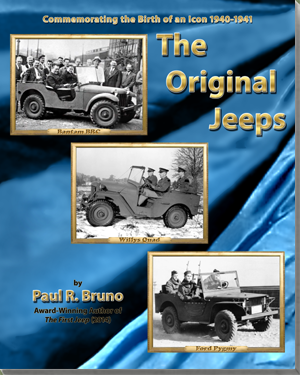- Menu
The Original Jeeps
by Award-Winning Author
Paul R. Bruno
the Jeep was one of three tools that won the war.
Order
Books »

Reader Comments about
TOJ »
A victor in World War I, the United States Army declined dramatically afterward. Since its founding, the USA had avoided being embroiled in foreign conflict. George Washington set down a policy of isolation from Europe in his farewell address of 1796. When the Great War ended, the American public counted their involvement as not worth the cost which reenergized the isolationism movement. By 1940, that posture would play a critical role in the lack of preparation of the Army for the coming war. Between the wars, however, the impetus and idea for the military to modernize had been developing. As part of that modernization, it needed to have a vehicle to move troops and small payloads, which would replace the cart and mule. The start of the Second World War in September 1939, made it an immediate absolute necessity.
On June 19, 1940, a military committee landed at Pittsburgh Airport and was driven to the American Bantam Car Company plant in Butler, PA, for a two-day meeting. The committee consisted of Armored Forces, Infantry, Cavalry, Ordnance and Quartermaster Corps, including two Army engineers, Mr. Beasley and Brown. In the discussion, they had a unanimous understanding that the proposed new versatile field vehicle would have to have four-wheel drive. Mr. Hall of the Spicer Company, the four-wheel drive specialist, agreed to come the next day. Then Beasley and Brown took up an ordinary yellow scratch pad and made a sketch which incorporated their ideas of what this car should likely be like and look like.
Willys' needed two attempts to procure a contract. In the second, chassis and body issues arose from a new body drawing issued by the QM on October 26, 1940, which impacted the quote. Willys' Roos, lead engineer, and Rice, government sales, worked out the kinks. November 27, Rice quoted a unit price of $959. Their actual costs without profit or overhead came to $989. The Army's approval was given on December 3 with the condition, similar to Ford, of test and acceptance of their pilot model. Later that day, request and approval from the Assistant Secretary of War came. Not wasting any time, the Army immediately notified Willys that they had a contract for 1,500 vehicles. With grit and determination, and some deft political maneuvering, Willys survived their second near-death experience in the truck ¼-ton 4X4 light procurement.

Publisher & Designer
MFM Publishing, L.A., CA USA
+1 310-429-9707
info@OriginalJeeps.com
![]()
![]()
![]()
![]()
![]()